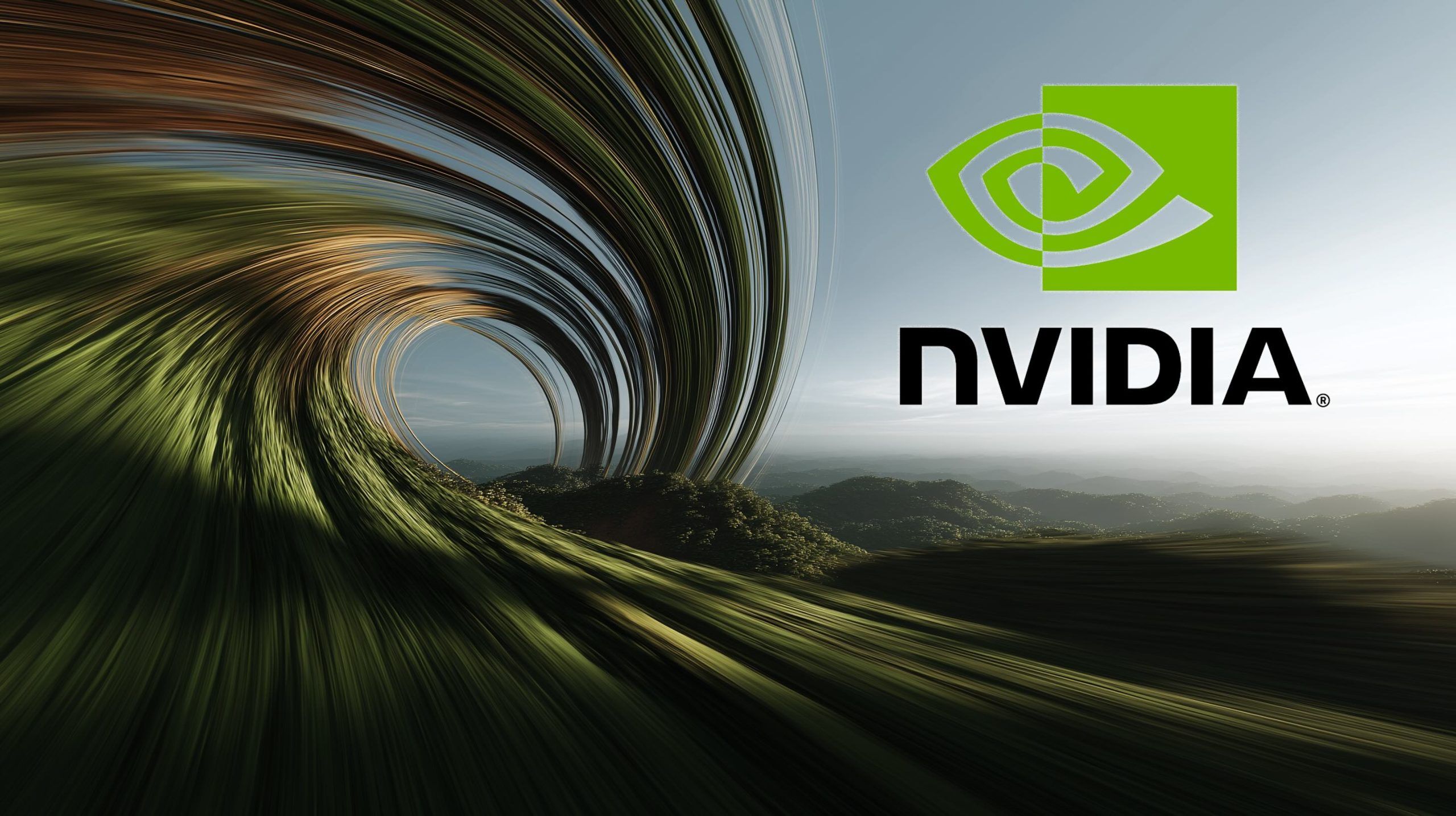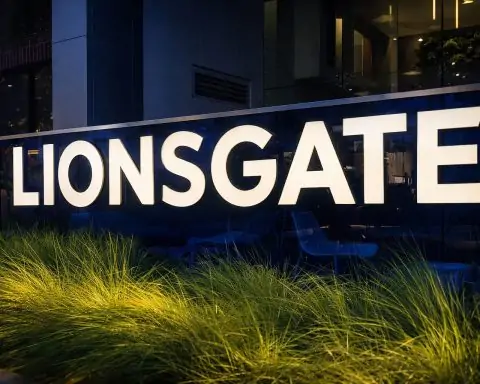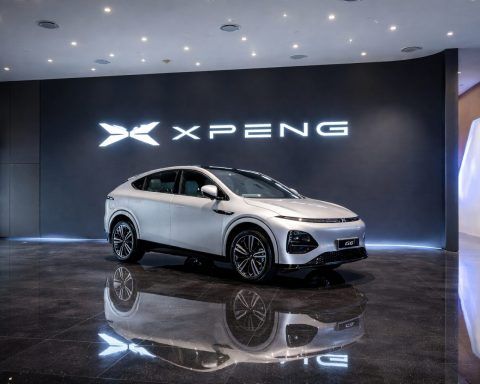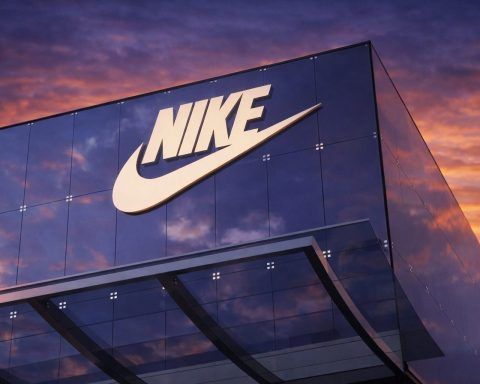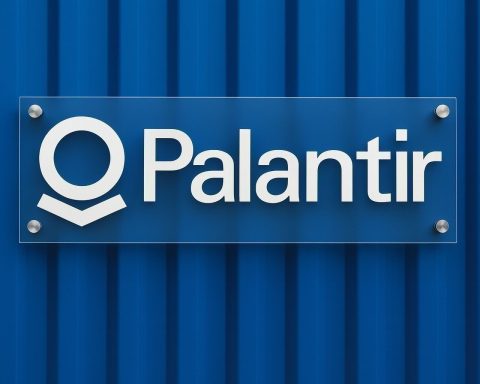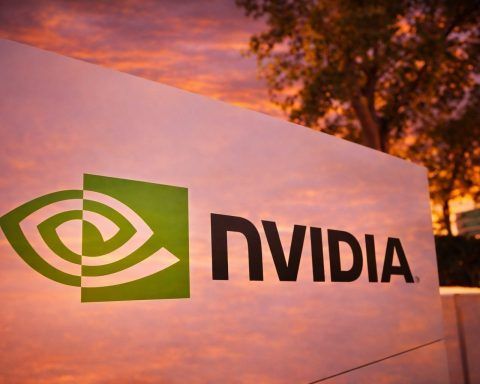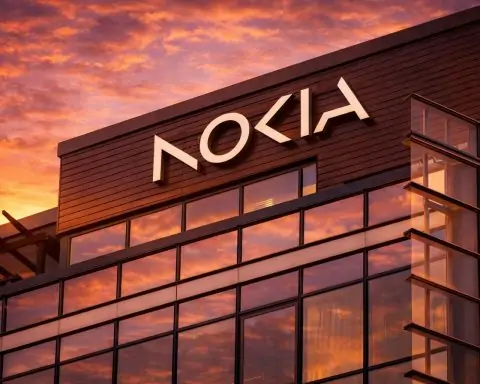- Nvidia briefly reached a $4 trillion market value in July 2025, with shares peaking at $164.42 on July 9 and closing that day at about a $3.97 trillion market cap.
- Nvidia guided about $45 billion in quarterly revenue for Q2 FY2026 (the quarter ending July).
- Nvidia unveiled the GeForce RTX 5050 desktop GPU with the Blackwell architecture, 2,560 CUDA cores and 8GB GDDR6, starting at $249 and delivering roughly 60% higher traditional graphics performance and up to 4× faster ray tracing with DLSS 4 AI upscaling.
- GeForce RTX 5050 Laptop GPUs began shipping in early July, with notebooks starting at $999 and featuring 2,560 Blackwell cores and next-gen GDDR7 for more than 4× the performance of GTX-class GPUs.
- Nvidia unveiled DGX Spark (up to 1 petaflop) and DGX Station (20 petaflops) AI systems powered by Grace-Blackwell, with early units from Dell and Gigabyte shipping in July.
- The DGX Cloud Lepton service was announced as a multicloud GPU-sharing marketplace linking developers to CoreWeave, Lambda, SoftBank and other cloud providers to access AI-level computing.
- Nvidia announced Europe and Middle East AI infrastructure partnerships to deploy over 3,000 exaflops of Blackwell-based AI compute across the UK, France, Italy, Spain and more via regional clouds such as Germany’s Domyn and France’s Mistral AI.
- Saudi Arabia’s HUMAIN entity, funded by the Public Investment Fund, will invest up to 500 megawatts of AI compute over five years, beginning with an 18,000-GPU NVIDIA Grace-Blackwell system deployed.
- Regulatory and geopolitical pressures include US export controls costing about $2.5 billion in Q1 and potentially $8 billion in Q2, plus Nvidia’s plan to exclude China from forecasts amid policy uncertainty and a new Malaysian rule requiring a 30-day notice for re-exports of US-origin AI chips.
- Nvidia faces legal and antitrust headwinds, including a Texas Xockets DPU patent lawsuit and a proposed class action over training data from nearly 200,000 books used to train NeMo, while regulators scrutinize its roughly 90% share of AI GPUs.
Nvidia News Roundup for July 2025
July 2025 has been a whirlwind month for NVIDIA, marked by record-breaking market highs, major product launches, expansive partnerships, and intensifying regulatory scrutiny. Below is a comprehensive roundup of the key developments, from Wall Street to Washington and from gaming rigs to global AI “factories.”
Financial Highs and Market Milestones
Nvidia’s market value briefly hit an unprecedented $4 trillion this month – the first company ever to reach that mark [1]. Shares surged to an all-time high around $164.42 on July 9, propelled by insatiable demand for AI technology. The stock closed that day just shy of the milestone (at a $3.97 trillion market cap) but is up roughly 22% year-to-date [2] after rebounding ~74% from April’s lows [3]. As one analyst noted, Nvidia’s soaring valuation “highlights the fact that companies are shifting their asset spend in the direction of AI and it’s pretty much the future of technology” [4]. Wall Street’s confidence in Nvidia – now comprising over 7% of the S&P 500 – reflects the company’s central role in the AI boom, with its high-performance chips “forming the backbone” of today’s AI revolution [5].
Investors and analysts remain emphatically bullish. Citi’s tech team raised its price target on Nvidia to $190 after observing that “demand for sovereign AI infrastructure” is already contributing “billions of dollars” to Nvidia’s 2025 revenue [6]. In fact, Nvidia is reportedly involved in “nearly every deal” worldwide to build national AI systems – from Europe to the Middle East – which further boosts its growth outlook [7]. Numerous analysts now rate the stock a “buy” or stronger, often citing Nvidia’s dominant market share in AI chips and expanding addressable markets in data centers and cloud services. The company’s Q2 FY2026 earnings (for the quarter ending July) are on the horizon (set for Aug. 27), with Nvidia having guided a hefty ~$45 billion in quarterly revenue [8]. All signs point to continued momentum as AI-related spending accelerates globally.
New Product Launches Drive AI and Gaming Forward
On the product front, Nvidia rolled out new hardware aimed at both AI developers and everyday gamers. Notably, the company unveiled its GeForce RTX 5050 GPU, bringing the latest “Blackwell” architecture to the budget-friendly segment. Starting in the second half of July, GeForce RTX 5050 graphics cards will arrive on store shelves starting at $249 [9]. This new desktop GPU (featuring 2,560 CUDA cores and 8GB GDDR6) delivers roughly 60% higher traditional graphics performance – and up to 4× faster ray tracing with DLSS 4 AI upscaling – compared to the previous-generation RTX 3050 [10]. Laptop gamers are also getting in on the action: GeForce RTX 5050 Laptop GPUs began shipping in early July, with gaming notebooks starting at $999 now available globally [11]. These 5050 Laptop GPUs pack the same 2,560 Blackwell cores plus next-gen GDDR7 memory, enabling thin-and-light laptops (as slim as 15 mm) to run cooler and longer while still achieving over 4× the performance of GTX-class predecessors in AI-accelerated games [12] [13].
Meanwhile, Nvidia is blurring the line between desktop PCs and supercomputers. This month the company and its OEM partners (Acer, ASUS, Dell, HP, Lenovo, MSI, and others) began shipping “AI-first” personal computers unveiled at Computex. These include the NVIDIA DGX Spark (a high-performance AI workstation) and DGX Station (an even more powerful desk-side AI supercomputer) designed for developers and researchers [14]. Equipped with NVIDIA’s new Grace-Blackwell chips, DGX Spark packs up to 1 petaflop in a desktop tower, while the beefier DGX Station delivers a staggering 20 petaflops of AI performance for the most demanding workloads [15] [16]. Jensen Huang, NVIDIA’s CEO, touted these systems as “direct descendants of the DGX-1” that ignited the AI revolution, now reborn in a compact form to “power the next generation of AI research and development” on any desk [17]. The goal is to give enterprises and labs server-class AI capability “always on, always waiting for you” right at the desk side [18]. Early units are being built by the likes of Dell and Gigabyte and are shipping out in July [19]. In tandem, Nvidia rolled out its new DGX Cloud “Lepton” service – a multicloud GPU-sharing marketplace that connects developers to a global network of NVIDIA-powered cloud providers (CoreWeave, Lambda, SoftBank, and others) [20]. This platform, announced at the end of June and now launching, will even integrate major public clouds, aiming to make accessing AI supercomputing as easy as a few clicks.
Strategic Partnerships Across AI, Cloud, Automotive and More
Nvidia’s strategic alliances only grew deeper in July, spanning continents and industries:
- AI “Factories” in Europe and the Middle East: Nvidia is at the heart of international initiatives to build cutting-edge AI infrastructure. In Europe, the company announced partnerships with several governments and tech firms to deploy over “3,000 exaflops” of Blackwell-based AI compute across the UK, France, Italy, Spain and more [21]. This sweeping plan – revealed at NVIDIA’s AI conference in Paris – will strengthen Europe’s digital sovereignty by installing Nvidia supercomputers via regional cloud providers (such as Germany’s Domyn and France’s Mistral AI) and establishing AI training centers across multiple countries [22] [23]. “Every industrial revolution begins with infrastructure. AI is the essential infrastructure of our time, just as electricity and the internet once were,” CEO Jensen Huang said, praising European leaders’ “bold leadership” in backing these efforts [24]. Around the same time, Nvidia inked a landmark partnership with Saudi Arabia to help turn the kingdom into a global AI powerhouse. During a state visit with U.S. President Trump and Saudi Crown Prince MBS in May (coming to fruition now), Nvidia’s Huang unveiled a plan for “AI factories” in Saudi Arabia powered by several hundred thousand Nvidia GPUs [25]. A new Saudi entity called HUMAIN (funded by the Public Investment Fund) will invest heavily to build up to 500 megawatts of AI compute capacity over five years – an enormous scale – with the first phase being a 18,000-GPU NVIDIA Grace-Blackwell supercomputer already in deployment [26]. Saudi officials described this partnership as a “significant step toward positioning the Kingdom as a leader among data- and AI-driven economies” in line with Vision 2030 [27] [28]. From Europe to the Middle East, these deals underscore how governments are teaming with Nvidia to secure “sovereign” AI capabilities, effectively betting on Nvidia’s platform as critical national infrastructure.
- Cloud and Enterprise Software Alliances: Nvidia also expanded its footprint via collaborations with enterprise tech giants. Microsoft and Nvidia deepened their alliance in July by integrating NVIDIA’s AI enterprise software into Microsoft’s cloud and enterprise products. As part of a broader partnership expansion (announced alongside the Windows 11 update cycle), Nvidia is rolling out industry-specific AI microservices on Microsoft’s platforms [29]. Meanwhile, ServiceNow teamed up with Nvidia to launch an open-source generative AI model (the “Apriel Nemotron 15B” model) using Nvidia’s NeMo framework [30] – giving ServiceNow’s enterprise customers the tools to build custom “agentic” AI solutions for workflows. These tie-ups exemplify Nvidia’s strategy of embedding its AI toolkit into the software that enterprises already use, from IT service management (ServiceNow) to cloud and productivity suites (Microsoft). “This is how we’re going to bring the world’s enterprise IT the ability to add AI to everything,” Huang said of these integrations, emphasizing that companies can layer AI into existing IT infrastructure rather than rip-and-replace [31]. In the cloud data center realm, Nvidia’s partner ecosystem continues to grow – not just with U.S. firms but globally. The new DGX Cloud “Lepton” mentioned earlier is launching with support from specialized GPU cloud providers like CoreWeave and Lambda, and Nvidia expects to onboard the major hyperscalers as well [32]. This effectively creates a global cloud marketplace for AI, all running on Nvidia hardware and software.
- Automotive and Robotics: While July didn’t see a brand-new car platform announcement, Nvidia’s influence in autonomous vehicles and robotics remains strong. The company’s longstanding partnership with General Motors, for example, is progressing on next-gen AI-equipped vehicles and factories. (Earlier this year at GTC, Huang showcased how GM is using NVIDIA’s simulation and AI platforms to design smarter EV factories and enhance driver-assistance systems [33].) Nvidia’s DRIVE platform is becoming a de-facto standard for many automakers and Tier-1 suppliers building self-driving tech. In fact, manufacturing giant Foxconn has agreed to use Nvidia’s chips to develop EV self-driving platforms – a move expected to accelerate AI-driven electric vehicle production in the coming years [34]. Beyond cars, Nvidia partnered with numerous robotics firms at the Automatica expo (late June) to demonstrate how its Jetson and Isaac platforms power next-gen warehouse robots, industrial automation, and even humanoid robot prototypes. From factory floors to autonomous trucks, Nvidia’s AI silicon and software are at the center of the transportation industry’s transformation – a trend continuing through July and beyond.
- Gaming and Content: Nvidia’s collaborations in the gaming sector also saw continuity. The company worked closely with game studios to add support for its latest technologies (like DLSS 4 and RTX ray tracing) in upcoming titles. July’s GeForce driver updates brought day-one optimizations for summer game releases and even enabled new AI features (such as NPC speech and physics enhancements) in certain games [35] [36]. Meanwhile, the GeForce NOW cloud gaming service continued to expand, with 20+ new games added in July and partnerships with publishers to stream their biggest franchises [37]. All these efforts ensure that Nvidia remains deeply embedded in the gaming ecosystem, not just via GPUs but through software, developer tools, and cloud services that collectively enhance the gamer experience.
Regulatory and Geopolitical Challenges Mount
Amid its rapid growth, Nvidia is navigating an increasingly complex geopolitical landscape in July. U.S.–China tech tensions loomed large over the company’s operations. Since 2022, the U.S. government has imposed strict export controls blocking Nvidia’s most advanced AI chips from being sold to China (a market that recently accounted for ~13% of Nvidia’s revenue) [38] [39]. In early July, Nvidia CEO Jensen Huang announced an unusual step: the company will no longer include China in its financial forecasts due to the uncertainty around these trade restrictions [40] [41]. He cautioned investors not to count on any rollback of export bans, effectively “zero-basing” China in projections going forward. This move follows a massive surge of Chinese orders last year to stockpile Nvidia chips ahead of the bans – a boom that added $4.6 billion to Q1 sales – but now a looming shortfall. Nvidia said U.S. export limits already cost it an estimated $2.5 billion in lost sales in Q1, and it expects an ~$8 billion hit in Q2 from inability to ship to China [42]. Huang has been outspoken about the policy: “All in all, the export control was a failure,” he remarked bluntly in May, noting the curbs have “cost American companies billions of dollars in lost sales.” [43] He argued the government’s assumptions were “fundamentally flawed,” since the AI research in China continues apace and Chinese firms simply turned to alternatives [44]. Ironically, by driving Chinese players to develop indigenous chips (and buy from Nvidia’s competitors), the U.S. rules may have eroded Nvidia’s market share in China from ~95% to 50% over the past two years [45]. Huang even praised the Trump administration’s recent decision to modify or scrap some of these AI chip export rules, saying President Trump “realises [cutting off China entirely is] exactly the wrong goal” and applauding a shift toward a global licensing framework [46] [47]. This political about-face – coming as part of broader U.S.-China trade negotiations – could potentially reopen Nvidia’s access to a $50 billion Chinese AI market next year, if finalized [48].
In the meantime, Nvidia is trying to maintain its Chinese business within legal bounds. Jensen Huang is slated to visit Beijing on July 16 for a highly anticipated media briefing – his second trip to China this year – to meet with partners and developers. The visit is under intense scrutiny: a bipartisan pair of U.S. senators even sent Huang a letter ahead of time urging him not to meet with any blacklisted Chinese companies or military-linked entities during his stay [49]. Washington lawmakers are clearly wary of any perception that Nvidia might circumvent export controls or share sensitive technology. (For his part, Huang has stressed publicly that China remains a critical market for Nvidia and that Chinese firms “crave” Nvidia’s chips due to the unique capabilities of its CUDA software ecosystem [50] [51].) U.S. officials are also cracking down on third-party smuggling of Nvidia’s AI chips into China via intermediary countries. In late June, a U.S. congressional committee revealed alarming evidence of “widespread” gray-market trafficking of banned Nvidia GPUs to China, often through hubs like Hong Kong and Southeast Asia [52] [53]. In response, lawmakers from both parties are drafting legislation to mandate tracking technology in high-end chips. One proposed bill would require Nvidia and others to embed location-verification features so that exported AI accelerators can be deactivated if they end up in unauthorized countries [54] [55]. (Experts note that many Nvidia chips already have such telemetry capabilities built-in [56].) This push for “chip passports” has bipartisan support as a means to enforce export laws in real time [57] [58].
Other governments are aligning with U.S. efforts as well. Malaysia announced on July 14 a new rule requiring a special trade permit for any re-export or transit of U.S.-origin high-performance AI chips [59]. Effective immediately, companies shipping advanced Nvidia or AMD GPUs through Malaysia must give 30 days’ notice and obtain approval, to prevent Malaysia from being used as a backdoor to China. Malaysia’s trade ministry stated it “stands firm against any attempt to circumvent export controls”, pledging strict legal action for violators [60]. The move follows reports that smugglers have used Malaysia as a trans-shipment point for banned chips, and even a recent incident involving Singapore authorities investigating illegal shipments of Nvidia-powered servers tied to a Chinese fraud case [61]. In short, the global supply chain is being tightly policed for Nvidia’s hottest AI products.
On the regulatory front, antitrust scrutiny is also brewing. U.S. regulators have signaled concern that Nvidia’s dominance in AI hardware (≈90% share in AI GPUs) could pose competition issues. The FTC and DOJ reached an agreement last year divvying up jurisdiction to possibly investigate Nvidia (alongside Microsoft and OpenAI) for anti-competitive behavior in the AI industry [62] [63]. Thus far no formal case has been announced, but questions linger about whether Nvidia’s tight partnerships (for example, with cloud providers who also buy its chips) could stifle would-be rivals or lock in its market power. Nvidia also continues to face legal challenges over intellectual property: a Texas startup, Xockets, has a pending lawsuit accusing Nvidia of “stealing” its DPU chip technology and even alleges Nvidia conspired with others to suppress Xockets through patent schemes [64] [65]. That case seeks potentially billions in damages and an injunction on Nvidia’s Blackwell-based AI chips, though Nvidia staunchly denies wrongdoing [66] [67]. And in the content arena, Nvidia was sued (in a proposed class action) by a group of authors who claim the company used copyrighted books to train its NeMo generative AI models without permission [68] [69]. (The suit points to a dataset of nearly 200,000 books that was briefly used to improve Nvidia’s large language model capabilities.) Nvidia has said little about the case publicly, but it joins the likes of OpenAI in facing legal questions about AI training data. These lawsuits are still in early stages, but they underscore the new kinds of legal headaches Nvidia faces as it extends from hardware into AI software and services.
Outlook: Balancing Breakneck Growth with Backlash
In summary, July 2025 has been a month of superlatives for Nvidia. The company notched historic stock market highs, launched new products to cement its lead in both consumer and data-center markets, and leveraged partnerships from Silicon Valley to Saudi Arabia that could shape the future of AI infrastructure. Nvidia’s CEO and founder Jensen Huang remains an ever-optimistic figure at the center of it all – heralding the dawn of “agentic AI” computing and likening today’s AI build-out to past industrial revolutions [70]. The company’s influence has arguably never been greater, as its technologies enable everything from cutting-edge scientific research to the latest video games and autonomous vehicles.
Yet, Nvidia’s meteoric rise is also drawing intense scrutiny. The company must carefully navigate export bans, political pressures and legal challenges that could throttle its access to key markets or slow its momentum. How Nvidia balances its role as America’s AI champion with the reality that much of the AI demand lies overseas (including in geopolitical rivals) will be closely watched by industry observers and policymakers alike. Thus far, Huang is attempting a high-wire act – engaging with China to whatever extent possible, lobbying for favorable policy changes, and in the meantime diverting Nvidia’s energies to regions like the Middle East and Europe where investment in AI is welcome and unencumbered.
For tech enthusiasts and investors, the takeaway is that Nvidia sits firmly at the crossroads of the AI era’s promise and pitfalls. The company is firing on all cylinders: financially, it’s delivering jaw-dropping growth; technologically, it’s rolling out acclaimed new chips and systems; strategically, it’s partnering with virtually every important player in the AI ecosystem. At the same time, Nvidia’s size and criticality make it a magnet for political and legal challenges that will persist. As July 2025 has shown, Nvidia is now far more than a chip company – it’s a central pillar of the AI economy, with all the opportunity and responsibility that entails. In the words of one portfolio manager, “it’s pretty much the future of technology.” [71] And for better or worse, every development around Nvidia reverberates across markets, industries, and even nations. Expect the drama to continue well beyond this eventful month, as Nvidia navigates its next chapters at the cutting edge of tech.
Sources:
- Reuters – “Nvidia’s stock market value hits $4 trillion on AI dominance” (July 9, 2025) [72] [73]
- Reuters – “Nvidia CEO to hold media briefing in Beijing on July 16” (July 13, 2025) [74] [75]
- Reuters – “Malaysia says trade permit required for AI chips of U.S. origin” (July 14, 2025) [76] [77]
- NVIDIA GeForce Blog – “GeForce RTX 5050 GPUs Bring Blackwell RTX to Gamers…Starting at $249” (June 24, 2025) [78] [79]
- NVIDIA Newsroom – “Europe Builds AI Infrastructure With NVIDIA…” (June 11, 2025) [80] [81]
- NVIDIA Newsroom – “Saudi Arabia and NVIDIA to Build AI Factories…” (May 13, 2025) [82]
- CIO Dive – “Nvidia activates AI PC partners, rolls out GPU cloud” (May 19, 2025) [83] [84]
- Nasdaq/Motley Fool – “Nvidia Stock May Double in the Next 3 Years. Here’s Why.” (July 11, 2025) [85] [86]
- Reuters – “Nvidia CEO praises Trump move to scrap some AI export curbs” (May 21, 2025) [87] [88]
- Reuters – “Nvidia to exclude China from forecasts amid US chip export curbs – CNN” (June 12, 2025) [89]
- Reuters – “Nvidia is sued by authors over AI use of copyrighted works” (Mar 11, 2024) [90]
- Reuters – “Nvidia, Microsoft hit with patent lawsuit over AI tech” (Sep 5, 2024) [91] [92]
References
1. www.reuters.com, 2. www.reuters.com, 3. www.reuters.com, 4. www.reuters.com, 5. www.reuters.com, 6. www.nasdaq.com, 7. www.nasdaq.com, 8. www.reuters.com, 9. www.nvidia.com, 10. www.nvidia.com, 11. www.nvidia.com, 12. www.nvidia.com, 13. www.nvidia.com, 14. www.ciodive.com, 15. nvidianews.nvidia.com, 16. nvidianews.nvidia.com, 17. nvidianews.nvidia.com, 18. www.ciodive.com, 19. www.ciodive.com, 20. www.ciodive.com, 21. nvidianews.nvidia.com, 22. nvidianews.nvidia.com, 23. nvidianews.nvidia.com, 24. nvidianews.nvidia.com, 25. nvidianews.nvidia.com, 26. nvidianews.nvidia.com, 27. nvidianews.nvidia.com, 28. nvidianews.nvidia.com, 29. www.ciodive.com, 30. www.ciodive.com, 31. www.ciodive.com, 32. www.ciodive.com, 33. tecknexus.com, 34. www.reuters.com, 35. nvidianews.nvidia.com, 36. www.nvidia.com, 37. blogs.nvidia.com, 38. www.reuters.com, 39. www.reuters.com, 40. www.reuters.com, 41. www.reuters.com, 42. www.reuters.com, 43. www.reuters.com, 44. www.reuters.com, 45. www.reuters.com, 46. www.reuters.com, 47. www.reuters.com, 48. www.reuters.com, 49. www.reuters.com, 50. www.reuters.com, 51. www.reuters.com, 52. www.reuters.com, 53. www.reuters.com, 54. www.reuters.com, 55. www.reuters.com, 56. www.reuters.com, 57. www.reuters.com, 58. www.reuters.com, 59. www.reuters.com, 60. www.reuters.com, 61. www.reuters.com, 62. www.reuters.com, 63. www.reuters.com, 64. www.reuters.com, 65. www.reuters.com, 66. www.reuters.com, 67. www.reuters.com, 68. www.reuters.com, 69. www.reuters.com, 70. nvidianews.nvidia.com, 71. www.reuters.com, 72. www.reuters.com, 73. www.reuters.com, 74. www.reuters.com, 75. www.reuters.com, 76. www.reuters.com, 77. www.reuters.com, 78. www.nvidia.com, 79. www.nvidia.com, 80. nvidianews.nvidia.com, 81. nvidianews.nvidia.com, 82. nvidianews.nvidia.com, 83. www.ciodive.com, 84. www.ciodive.com, 85. www.nasdaq.com, 86. www.nasdaq.com, 87. www.reuters.com, 88. www.reuters.com, 89. www.reuters.com, 90. www.reuters.com, 91. www.reuters.com, 92. www.reuters.com
